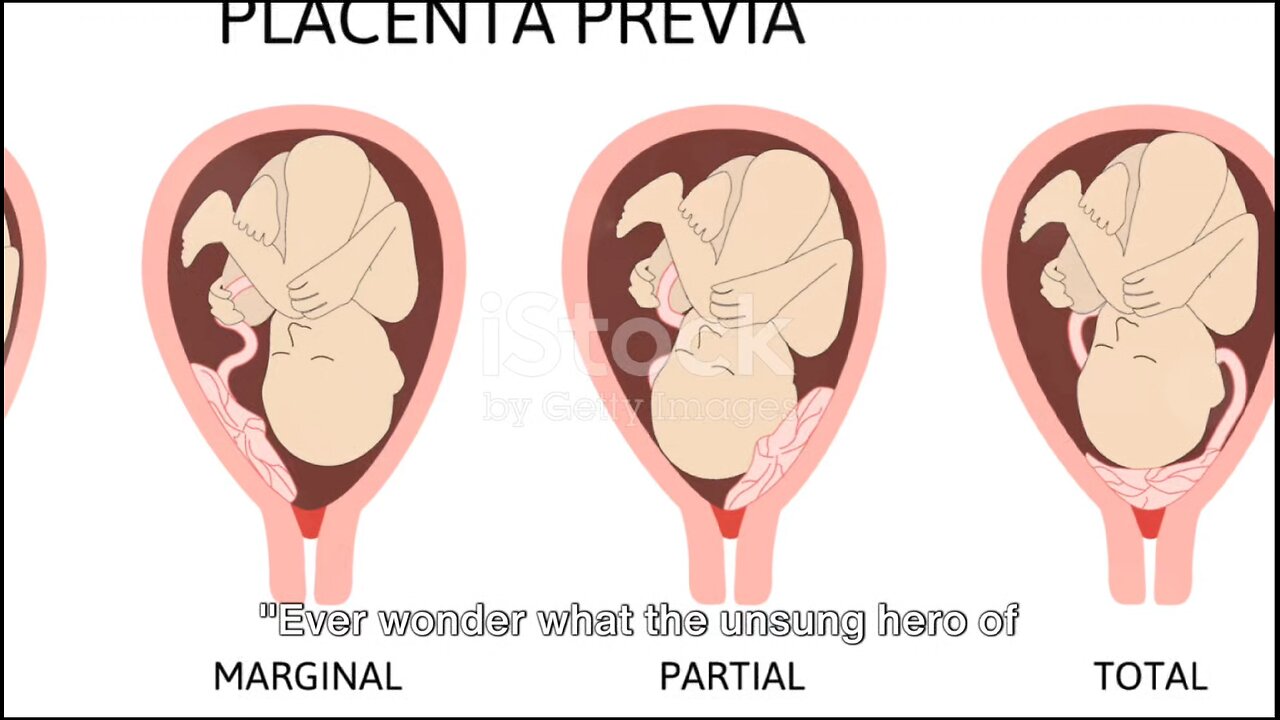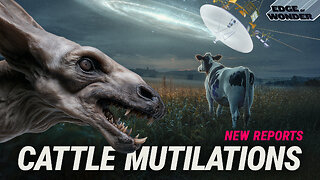Premium Only Content

The development of Placenta
The placenta is a vital organ in the development of mammals, playing a crucial role in supporting the growth and well-being of the developing fetus. Let's take a brief look at the stages of placental development:
1. **Formation during Pregnancy:**
- The development of the placenta begins shortly after fertilization when the fertilized egg (zygote) undergoes multiple cell divisions and forms a blastocyst.
- The blastocyst then implants itself into the uterine lining, and a structure called the trophoblast differentiates from it.
2. **Formation of Chorionic Villi:**
- The trophoblast develops into chorionic villi, finger-like projections that extend into the uterine wall. These villi play a crucial role in establishing a connection between the developing embryo and the mother's blood supply.
3. **Amniotic Sac and Yolk Sac:**
- Simultaneously, the amniotic sac and yolk sac form to provide protection and nourishment to the developing embryo.
4. **Placental Development:**
- The chorionic villi continue to grow and invade the uterine lining, forming the basis of the placenta.
- The placenta consists of maternal and fetal components. Maternal blood surrounds the chorionic villi, allowing the exchange of nutrients, oxygen, and waste products between the mother and the fetus.
5. **Structural Development:**
- As pregnancy progresses, the placenta undergoes structural changes, adapting to the increasing demands of the growing fetus.
- Blood vessels develop within the chorionic villi, forming a complex network that facilitates efficient nutrient and gas exchange.
6. **Endocrine Function:**
- The placenta also serves as an endocrine organ, producing hormones such as human chorionic gonadotropin (hCG), progesterone, and estrogen. These hormones play crucial roles in maintaining pregnancy and supporting fetal development.
7. **Maturation and Functionality:**
- By the end of the first trimester, the placenta is well-developed and fully functional. It continues to grow and adapt throughout pregnancy to meet the changing needs of the developing fetus.
8. **Delivery and Postpartum:**
- After childbirth, the placenta is expelled during the delivery of the baby. This process is known as the third stage of labor.
- The removal of the placenta marks the completion of its role in supporting fetal development.
In summary, the development of the placenta is a dynamic and intricate process that involves the formation of chorionic villi, establishment of maternal-fetal blood circulation, and adaptation to the changing needs of the developing fetus throughout pregnancy.
-
 LIVE
LIVE
TimcastIRL
22 minutes agoTrans Minneapolis Shooter BLAMED Massacre On Mom & Gender Transition | Timcast IRL
11,826 watching -

Nerdrotic
4 hours ago $5.59 earnedLet's TACO-bout Take Us North, Hollywood COPE! Cracker Barrel CRACKED! | Friday Night Tights 369
29.1K1 -
 LIVE
LIVE
RiftTV
2 hours agoHow Blue Light is Turning You Gay | The Rift | Guest: Jack Kruse
612 watching -
 LIVE
LIVE
SpartakusLIVE
3 hours agoFriday NITE HYPE
1,579 watching -
 LIVE
LIVE
Tundra Tactical
1 hour agoCrits & Giggles Diablo IV On A Friday Night!
53 watching -
 LIVE
LIVE
SavageJayGatsby
19 hours agoFriend Friday | MicroWorks | $300 Weekly Goal for Spicy Bite Saturday | 250 Follower Goal!
57 watching -
 LIVE
LIVE
Edge of Wonder
3 hours agoCattle Mutilations, Chupacabra Sightings & NASA’s Voyager Goes Dark?
266 watching -
 LIVE
LIVE
Mally_Mouse
22 hours agoFriend Friday!! 🎉 - Let's Play! - Microworks
127 watching -
 LIVE
LIVE
Quite Frankly
2 days agoHookah Special: Found Footage, Workplace Folly, More Cringe Music Vids (8/23/25 Re-Run)
367 watching -
 LIVE
LIVE
LFA TV
13 hours agoLFA TV ALL DAY STREAM - FRIDAY 8/29/25
744 watching